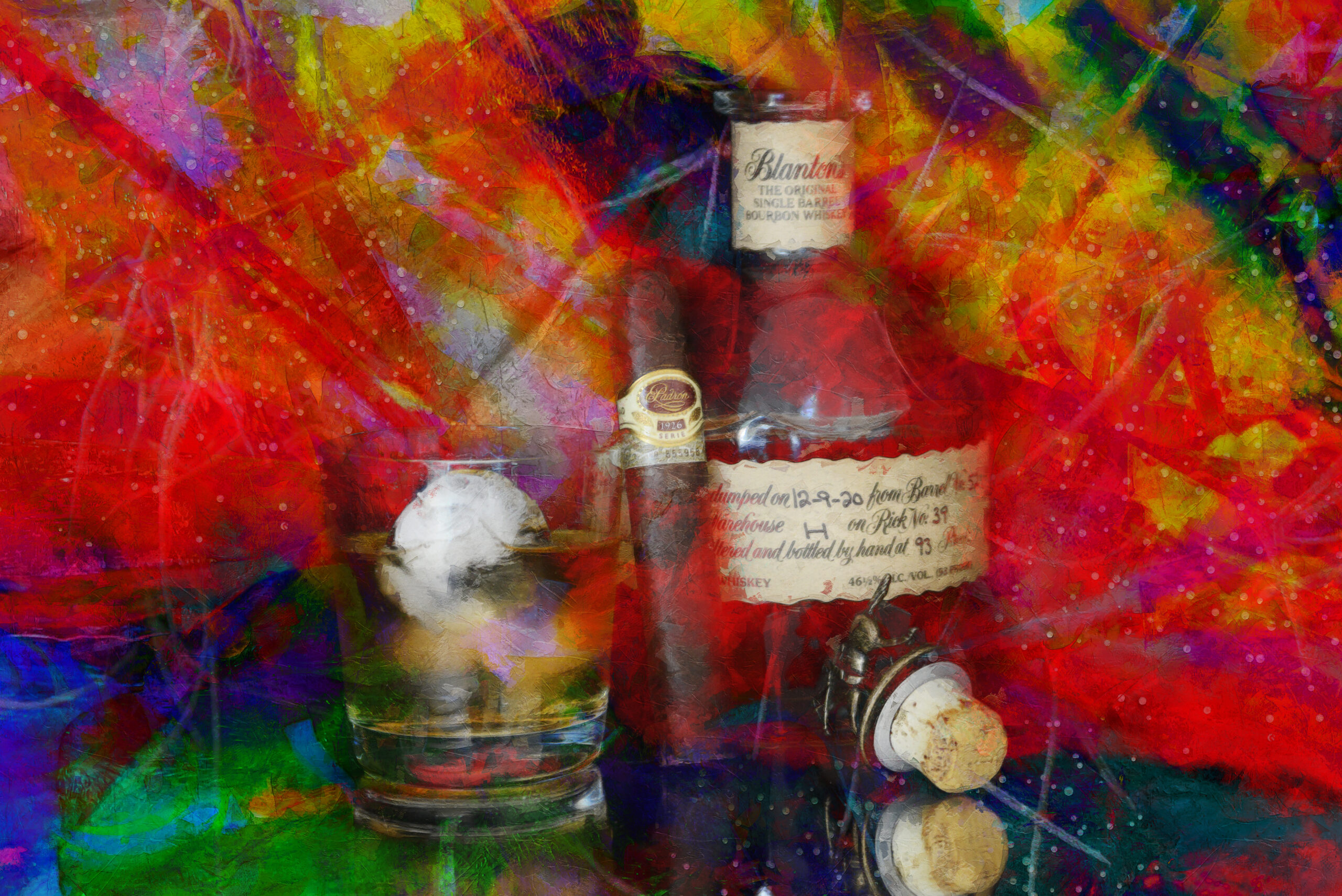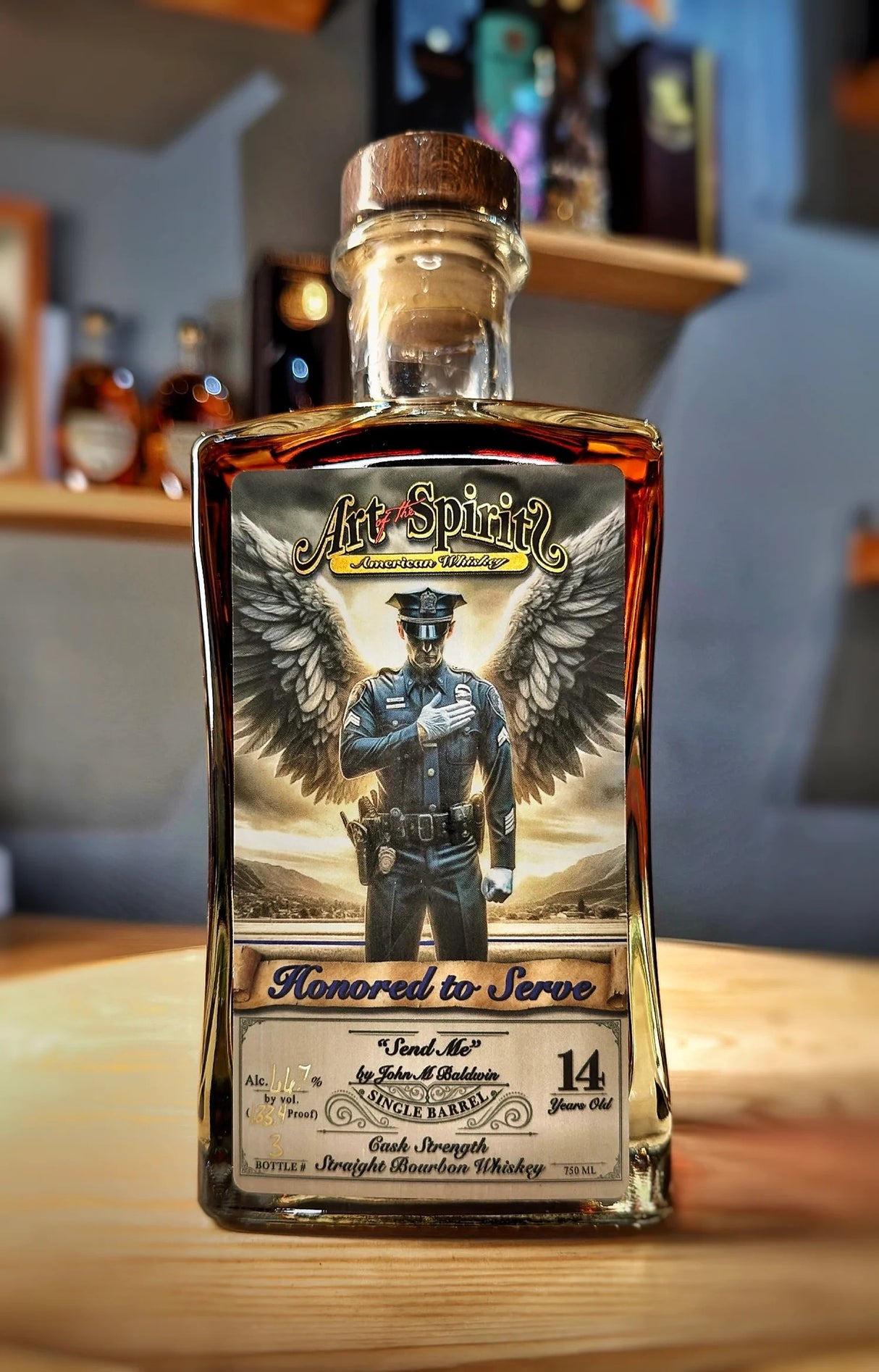Discover the World of Bourbon Art: A Journey Through Culture and Craftsmanship
Discover the World of Bourbon Art: A Journey Through Culture and Craftsmanship
Blog Article
The Relevance of Whiskey Art in Celebrating Heritage and Craftsmanship in the Beverage Industry
The complex relationship in between bourbon art and the party of heritage and workmanship within the beverage market can not be overstated. Through attentively created tags and bottles, bourbon brand names encapsulate their historical roots and the artisanal abilities that specify their manufacturing approaches. This creative dimension not only boosts market allure however also functions as an avenue for social narration, cultivating a deeper connection in between the craft and the consumer. As we explore the numerous aspects of this topic, appealing questions concerning the influence of contemporary trends on typical methods occur, motivating further exam.
The Historic Roots of Whiskey
At the heart of whiskey's appeal exists a rich tapestry of historic roots that map back to old worlds. The beginnings of whiskey can be connected to the distillation methods of the Sumerians and Babylonians around 2000 BCE, where very early forms of fermented grain drinks started to arise. Nevertheless, it was in the Center Ages that the art of purification progressed significantly, especially in Ireland and Scotland, resulting in the development of bourbon as we understand it today.
The term "whiskey" itself stems from the Gaelic word "uisce beatha," suggesting "water of life." This phrase underscores the cultural relevance of bourbon in Celtic cultures, where it was frequently connected with routines, parties, and public bonding. By the 15th century, distillation became an acknowledged craft within reclusive areas, leading the means for the establishment of legal distilleries.
As trade paths broadened, scotch's appeal expanded, going beyond local borders and recording the passion of aficionados worldwide. Whiskey Art. This historical journey reflects not only the craftsmanship behind whiskey production however additionally its integral role in social and cultural contexts, noting it as a substantial drink throughout background
Artistic Expression in Branding
Bourbon branding stands as an engaging crossway of artistry and business, where aesthetic identity plays a critical duty in forming customer understanding. The aesthetics of bourbon labels, packaging, and marketing products mirror not only the brand's story yet additionally its core values and heritage. Through artistic expression, distilleries convey a story that resonates with consumers, stimulating feelings and stimulating connections.
The usage of color, typography, and imagery in branding offers to set apart products in a saturated market. Traditional concepts may stimulate a feeling of authenticity and workmanship, while modern layouts can represent technology and forward-thinking. This tactical imaginative direction improves brand name recognition and loyalty, allowing consumers to build a personal partnership with the whiskey they select.
In addition, artistic expression in branding often functions as an event of regional heritage. Distilleries frequently incorporate neighborhood icons or historical referrals into their designs, creating a sense of area that welcomes consumers to partake in a broader social experience. Eventually, the virtuosity behind whiskey branding not just enhances visual charm yet also enriches the general story of the brand, fostering a deeper recognition for the craftsmanship and heritage ingrained in each container.
Workmanship in Container Layout
The artistry apparent in scotch branding expands past aesthetic identification to incorporate the craftsmanship associated with container design. Each container acts as a vessel not simply for the spirit within, but also for the story it outlines its origin, quality, and practice. The design procedure needs careful interest to detail, as elements such as material, closure, and shape add significantly to the total assumption of the bourbon.
Craftsmanship in bottle layout involves choosing premium glass that can improve the whiskey's shade and quality, while likewise offering a tactile experience for the customer. The shape of the bottle should be both functional and cosmetically visite site attractive, usually showing the heritage of the brand name. Lots of distilleries choose unique forms or embossed logo designs that evoke a sense of credibility and history.
In addition, the label style and typography play a vital role in connecting the brand's story. Limited Edition. A well-crafted bottle Discover More not just captivates the customer's eye but additionally reinforces the brand name's dedication to top quality and custom. In this way, the workmanship of bottle style becomes an essential aspect of the bourbon experience, merging virtuosity with an extensive respect for heritage
Cultural Value of Scotch Art
Commemorating tradition and workmanship, the social importance of scotch art transcends plain appearances, intertwining with the historic and social narratives of the areas where it originates. Each bottle works as a canvas, depicting the one-of-a-kind tales, mythology, and practices that have shaped neighborhood whiskey-making practices. The intricate designs commonly show the heritage of the distillers, integrating icons and concepts that resonate with the culture and worths of their neighborhoods.

Furthermore, scotch art plays a crucial function in common gatherings and events, functioning as a tangible web link between individuals and their shared experiences. By valuing the creativity in bourbon product packaging, customers grow a deeper understanding and respect for the craft, eventually enhancing their satisfaction of the beverage itself.
Modern Trends in Whiskey Presentation
In recent years, the discussion of whiskey has actually advanced to reflect contemporary preferences and patterns while still recognizing standard workmanship - Realism Art. Distilleries are increasingly concentrating on visual elements that boost the overall alcohol consumption experience, linking the void between heritage and modernity
Innovative container styles have actually arised, frequently integrating lasting materials and artistic labels that inform see this engaging tales. Many brand names currently collaborate with local artists, instilling their products with one-of-a-kind aesthetic expressions that reverberate with consumers. Furthermore, limited-edition launches are frequently packaged in collectible containers, including value and appeal for aficionados.
Final Thought
In conclusion, whiskey art serves as a vital conduit for sharing the heritage and workmanship integral in the drink market. With elaborate branding, ingenious container layouts, and culturally substantial imaginative aspects, scotch brands effectively recognize their practices and link with consumers.


Workmanship in container design involves picking high-grade glass that can improve the scotch's color and quality, while likewise offering a tactile experience for the customer. In this method, the craftsmanship of container layout ends up being a vital facet of the scotch experience, merging virtuosity with a profound respect for heritage.
In verdict, scotch art offers as a crucial conduit for sharing the heritage and craftsmanship inherent in the beverage sector.
Report this page